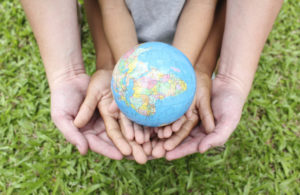 International adoption is the placement of a child from another country with a family from the United States. Countries throughout the world allow children to be adopted into the United States when they can’t be cared for in their home country.
International adoption is the placement of a child from another country with a family from the United States. Countries throughout the world allow children to be adopted into the United States when they can’t be cared for in their home country.
The process of adopting a child from another country varies greatly, as it is governed by the laws of United States (both federal and state law) and the laws of the country where the child was born. However, the United States requires that every intercountry adoption follow certain procedures. Most adoptions include the following steps:
Select an adoption service provider – As with domestic adoptions, an adoption service provider helps the adopting families prepare paperwork and fulfill legal requirements. If a family intends to adopt from a country that is party to The Hague Adoption Convention, they will need to find an accredited agency. The Hague Adoption Convention is an international treaty to improve accountability, safeguards and cooperation in intercountry adoptions. Around 80 countries are party to this convention.
Gain approval to adopt – The United States Citizenship and Immigration Services (USCIS) must determine whether or not a family is fit to adopt a child from another country. The most important part is the home study. This is required by law, just as it is in a domestic adoption. Once the home study is complete, a family must file an application to adopt (Form I-600 or I-800, depending on the country from which you wish to adopt). When all of this is approved by USCIS, they will contact that country.
Be matched with a child – Patience is the key. The process can be quite long. If a family is hoping to adopt a toddler, they need to keep in mind the toddler may be closer to 3 or 4 by the time the adoption is finalized. Families need to plan for multiple trips to the child’s country, and possibly for an extended time in order to bond with the child they’ve been matched with.
Adopt or gain legal custody of the child in their birth country – Some countries do not allow final adoptions. Instead, the adopting parents will be granted guardianship. This allows the child to leave the country, and the adoption process is finalized in the United States.
Obtain a visa for the child moving to the United States – This is where the Consular Officer from the U.S. Embassy in that country comes in. Adopting families apply for an immigrant visa for their child with the Consular Officer. A visa interview will be scheduled in order to review all the necessary paperwork and make sure the adopting family’s file is complete. A foreign adoption or custody declaration does not automatically qualify a child for an immigrant visa.
Travel home with the child – Be prepared for the flight back to the United States. Infants and toddlers will need more gear, like a car seat, bottles, a stroller, formula, blankets and diapers. Older children will need items to entertain them on the long journey – books, crayons, simple toys and snacks. Bring several changes of clothes.
Re-adoption and Finalization – In some instances you will not be able to finalize the adoption in your child’s home country. Instead, you will need to finalize the adoption once you are back in the U.S. This is called an international re-adoption. Once this is done, you will attend a court hearing to legally finalize your family.
International adoptions can be a long and arduous process. But if you remain positive and patient, you will make it to the finish line and you will bring home the child who is meant to be in your arms.



How do I apply to a adoption Agency
Hi, Angelica — You can apply to American Adoptions here: https://www.americanadoptions.com/adopt/pre_app We look forward to hearing from you!